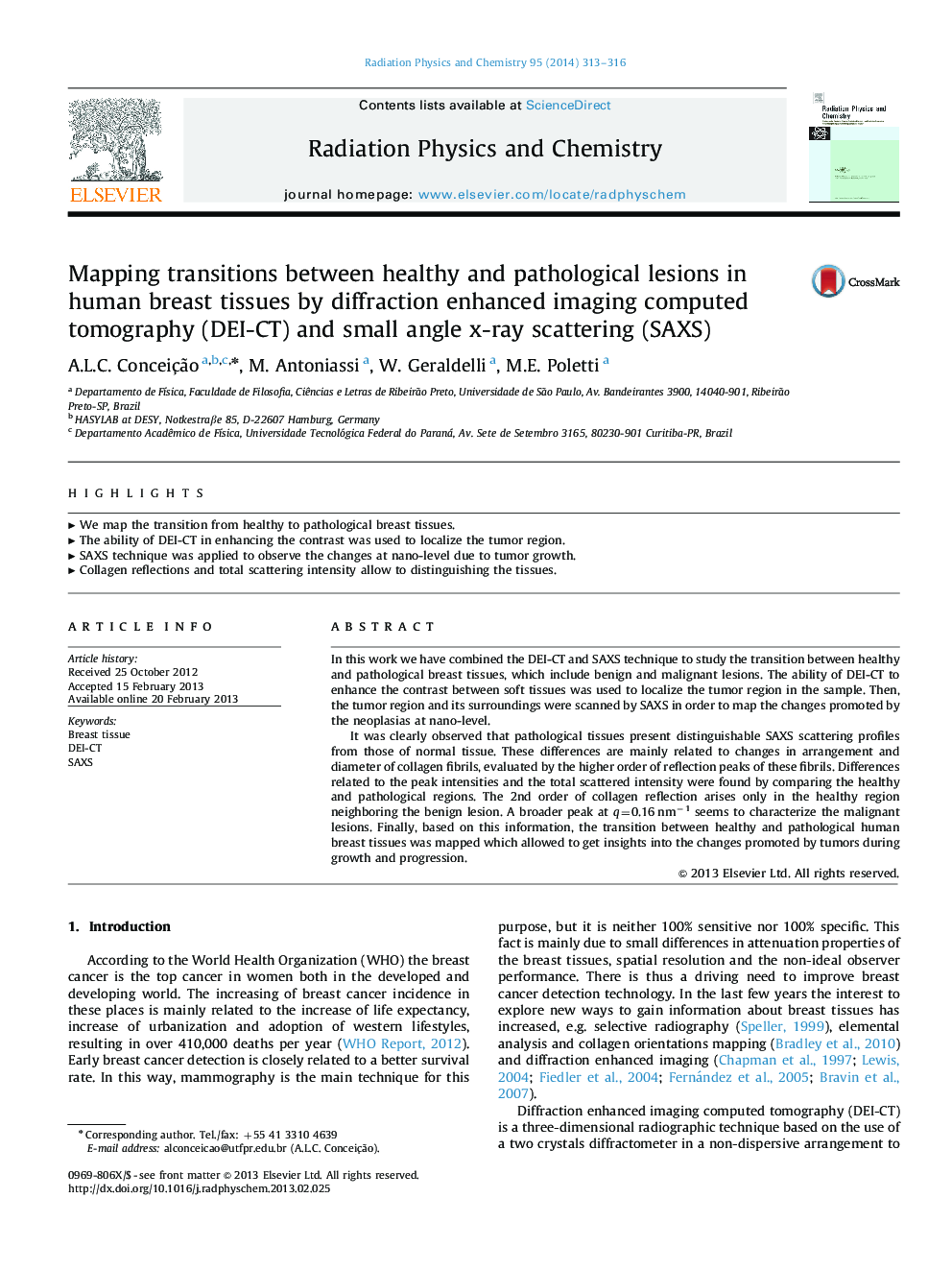| Article ID | Journal | Published Year | Pages | File Type |
|---|---|---|---|---|
| 1882468 | Radiation Physics and Chemistry | 2014 | 4 Pages |
In this work we have combined the DEI-CT and SAXS technique to study the transition between healthy and pathological breast tissues, which include benign and malignant lesions. The ability of DEI-CT to enhance the contrast between soft tissues was used to localize the tumor region in the sample. Then, the tumor region and its surroundings were scanned by SAXS in order to map the changes promoted by the neoplasias at nano-level.It was clearly observed that pathological tissues present distinguishable SAXS scattering profiles from those of normal tissue. These differences are mainly related to changes in arrangement and diameter of collagen fibrils, evaluated by the higher order of reflection peaks of these fibrils. Differences related to the peak intensities and the total scattered intensity were found by comparing the healthy and pathological regions. The 2nd order of collagen reflection arises only in the healthy region neighboring the benign lesion. A broader peak at q=0.16 nm−1 seems to characterize the malignant lesions. Finally, based on this information, the transition between healthy and pathological human breast tissues was mapped which allowed to get insights into the changes promoted by tumors during growth and progression.
► We map the transition from healthy to pathological breast tissues. ► The ability of DEI-CT in enhancing the contrast was used to localize the tumor region. ► SAXS technique was applied to observe the changes at nano-level due to tumor growth. ► Collagen reflections and total scattering intensity allow to distinguishing the tissues.
